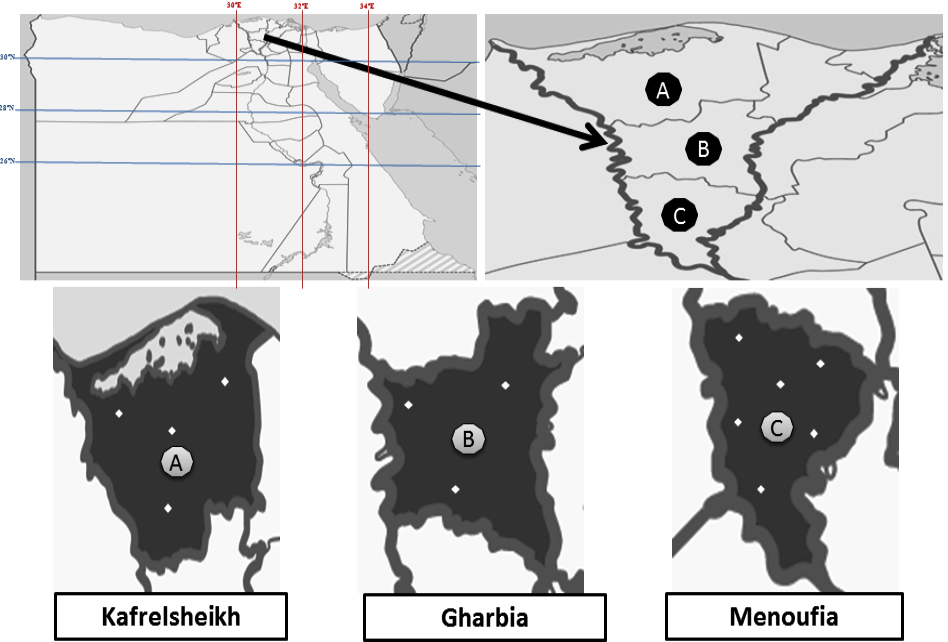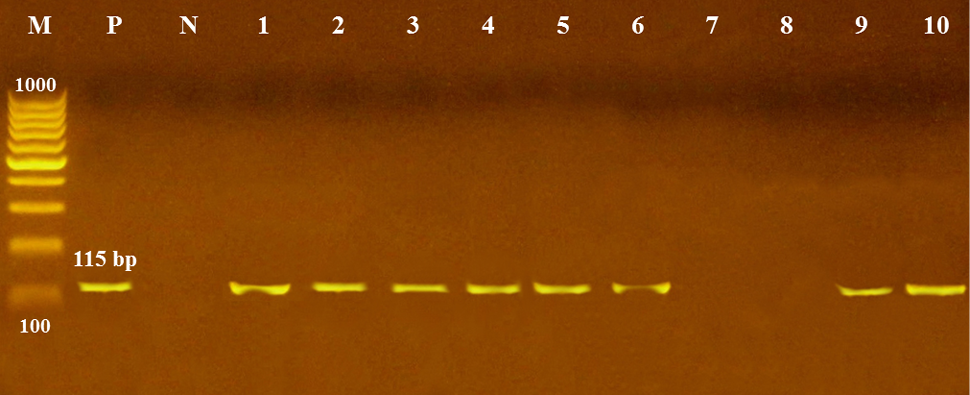Monitoring and Molecular Detection of Toxoplasma gondii in Food: Vegetables, Fruits, and Fish as Neglected Vehicles for Toxoplasmosis in the Nile Delta of Egypt
Walid Elmonir1*, Ahmed Abdel-Fattah Tayel2, Suzan Abdelbaky Kotb1 and Wael Fawzy El-Tras2
1Department of Hygiene and Preventive Medicine, (Zoonoses), Faculty of Veterinary Medicine, Kafrelsheikh University, Kafrelsheikh, Egypt.
2Faculty of Aquatic and Fisheries Sciences, Kafrelsheikh University, Kafrelsheikh, Egypt
Fig. 1.
Map of Egypt showing the sampling locations in the thee studied governorates of Nile Delta in Egypt. Kafrelsheikh governorate (Elhadadi , Bela, Sakha and Kafrmoger), Gharbia Governorate (Alhyatem, Kransho and, Fesha Sleem), and Menoufia Governorate (Tala-Babel, Berket Elsaba, Sheben Elkom, Menof-Tamalai, Elbagour-Kafr Shobra, and Ashmon -Sentres). White dots show sampling sites per each governorate.
Fig. 2.
Standard PCR detection of T. gondii DNA in various samples in this study. M, DNA marker. P, Positive control. N, Negative control. Lanes 1 and 2, Carrot samples. Lanes 3 and 4, Radishes samples. Lanes 5 and 6, lettuce samples. Lanes 7 and 8, fish samples (Tilapia and Mullet). Lanes 9 and 10, Strawberries samples.











